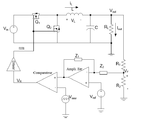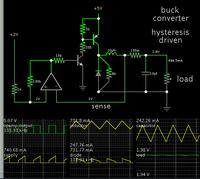ginolas
Newbie level 4
Low current dc/dc converter for wireless transmitter/receiver
Hello,
I have to conceive a dc/dc converter (buck), low power with a variable output voltage controled by analog signal in Bipolar or CMOS technology. Frequency: 1MHz, I: 500mA, the output varies between 1V to 3V.
Can someone help with an appropriate topology, some links or good advices please.
Kind regards,
Gino
Hello,
I have to conceive a dc/dc converter (buck), low power with a variable output voltage controled by analog signal in Bipolar or CMOS technology. Frequency: 1MHz, I: 500mA, the output varies between 1V to 3V.
Can someone help with an appropriate topology, some links or good advices please.
Kind regards,
Gino

